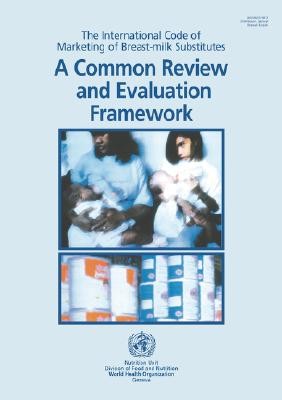
- We will send in 10–14 business days.
- Author: Who
- Publisher: World Health Organization
- ISBN-10: 9241595272
- ISBN-13: 9789241595278
- Format: 21 x 29.7 x 0.8 cm, softcover
- Language: English
- SAVE -10% with code: EXTRA
The International Code of Marketing of Breast-Milk Substitutes (e-book) (used book) | bookbook.eu
Reviews
Description
Sets out a carefully developed - and extensively tested - methodology for use by authorities in countries when evaluating their action to implement the International Code of Marketing of Breast-milk Substitutes. The framework, which can be adapted as appropriate, offers a standardized method of information and data collection for monitoring progress over time. The Code was adopted in 1981 with the aim of contributing to "the provision of safe and adequate nutrition for infants, by the protection and promotion of breast-feeding and by ensuring the proper use of breast-milk substitutes, when these are necessary, on the basis of adequate information and through appropriate marketing and distribution." During the period 1990-1991, WHO provided technical support to 14 countries that had indicated a desire to undertake an in-depth review and evaluation of their own experiences in giving effect to the Code. During this review, governments used a common review and evaluation framework, prepared by WHO. The original framework has subsequently been revised and expanded in the light of experience and lessons learned in other countries, including field tests in Ecuador and Thailand. The resulting common framework is presented in full detail in this volume, which follows the basic structure of the Code. Each of the eleven articles is covered in separate sections with three parts: a summary of the main focus, a description of critical issues, and suggested key informants. Use of the framework is greatly facilitated through the inclusion of numerous sample questionnaires.
EXTRA 10 % discount with code: EXTRA
The promotion ends in 21d.00:49:40
The discount code is valid when purchasing from 10 €. Discounts do not stack.
- Author: Who
- Publisher: World Health Organization
- ISBN-10: 9241595272
- ISBN-13: 9789241595278
- Format: 21 x 29.7 x 0.8 cm, softcover
- Language: English English
Sets out a carefully developed - and extensively tested - methodology for use by authorities in countries when evaluating their action to implement the International Code of Marketing of Breast-milk Substitutes. The framework, which can be adapted as appropriate, offers a standardized method of information and data collection for monitoring progress over time. The Code was adopted in 1981 with the aim of contributing to "the provision of safe and adequate nutrition for infants, by the protection and promotion of breast-feeding and by ensuring the proper use of breast-milk substitutes, when these are necessary, on the basis of adequate information and through appropriate marketing and distribution." During the period 1990-1991, WHO provided technical support to 14 countries that had indicated a desire to undertake an in-depth review and evaluation of their own experiences in giving effect to the Code. During this review, governments used a common review and evaluation framework, prepared by WHO. The original framework has subsequently been revised and expanded in the light of experience and lessons learned in other countries, including field tests in Ecuador and Thailand. The resulting common framework is presented in full detail in this volume, which follows the basic structure of the Code. Each of the eleven articles is covered in separate sections with three parts: a summary of the main focus, a description of critical issues, and suggested key informants. Use of the framework is greatly facilitated through the inclusion of numerous sample questionnaires.


Reviews